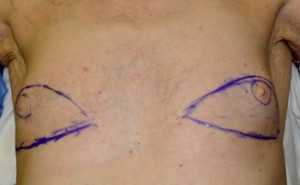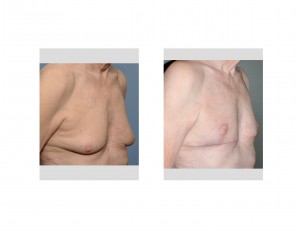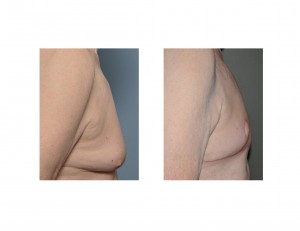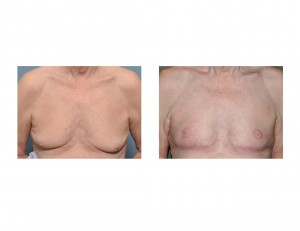Background: Gynecomastia, the development of breasts in men, is often thought of as a young man’s problem. While hormonal changes certainly set the stage for the emergence of breasts in some teenagers and young men, similar problems of a slightly different nature occur at the opposite end of the age spectrum.
When older men develop what used to be called ‘senile gynecomastia’ due to testosterone decline, it is not the ‘plump’ type of gynecomastia seen in youth. Rather it is a sagging mass of chest tissue in which the nipple and breast mound sags over the inframammary fold. There is a loss of skin elasticity and ligamentous laxity that allows the chest to fall off of the pectoralis muscle inferiorly.
While liposuction is a frequent treatment for gynecomastia reduction, it will not produce the desired result in many older gynecomastias. While some chest volume reduction will be achieved, the skin will not tighten up and the nipple will not be elevated higher on the chest wall afterwards. Some type of skin excisional chest wall tightening is needed.
When a breast lift is needed, men must be treated differently than women. Men can not have the same type of breast reduction scars since there is no mound to hide them when the lift is completed. It is the vertical scar between the nipple and the fold that would be objectionable in men.
Case Study: This 76 year-old man was bothered by the sagging shape of his chest. He did not like his appearance in shirts and felt he needed a ‘mansier’ to really hold his chest up. While he had some excessive breast tissue, his excessive skin was as much if not more of a problem.



Case Highlights:
1) The older male patient often develops chest sagging that is difficult to hide and not cured by exercise.
2) With loose and inelastic skin due to age, liposuction does not produce a satisfactory gynecomastia reduction for many older men.
3) Gynecomastia reduction with nipple transposition is the most effective chest reshaping method for the older male with ‘man boobs’.
Dr. Barry Eppley
Indianapolis, Indiana



